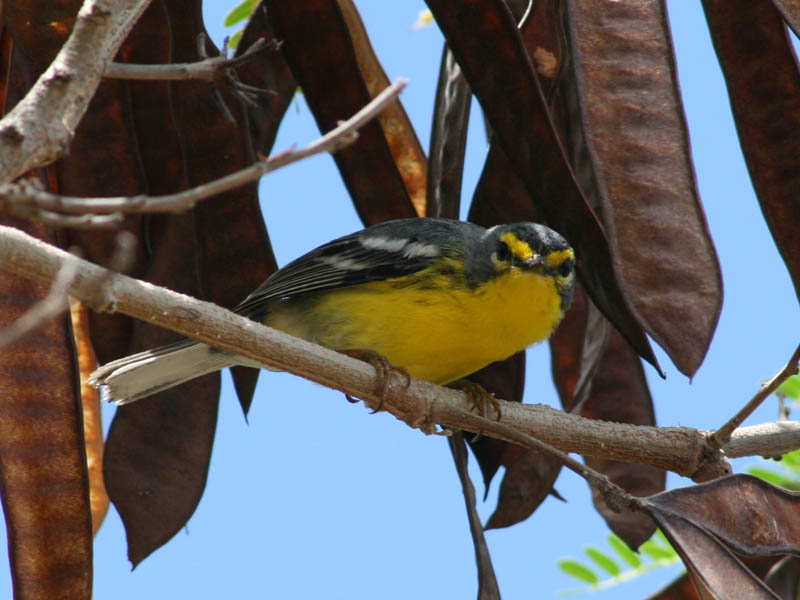News from Linnuvaatleja, www.linnuvaatleja.ee
Translation Liis
While there generally is a consensus on the purpose of bird song – singing is the easiest way of self-promotion and warnings to competitors – the springtime birdsong in early mornings has been explained in several ways. It has for instance been thought that on a calm windless morning when the background rustling is absent the singing reaches further and it is efficient for the birds to warn competitors and attract partners. It has also been proposed that in singing the male birds gobble early morning cool air, because it cools the sexual organs and protects the germ cells from overheating.
A novel explanation to early morning singing is offered in a study made in

As study species the Adelaide’s warbler (Setophaga adelaidae) was selected; there are on average 29 different song types in its repertoire. A detailed analysis of the song parameters proved the hypothesis of the scientists about “singing up” the voice – compared to early morning the song of the males improved and the song rate and number of notes used increased with the warming of the muscles in the syrinx. The lack of influence of time, air temperature and song mode also pointed to the importance of vocal exercises. The changes in the song were small and only noticeable by technical instruments to a human ear but according to the estimate of scientists there were still important biological effects for the choice of a mate.
In order to be in their best singing shape it is useful for male birds to start the singing early in the morning. Late starters may not make such a good impression on the females and may be left ”empty-handed”.
Schraft HA, Medina OJ, McClure J, Pereira DA, Logue DM (2017). Within-day improvement in a behavioural display: wild birds ‘warm up’. Animal Behaviour 124: 167–174. http://dx.doi.org/10.1016/j.anbehav.2016.12.026
The science news are edited by Marko Mägi, marko.magi/at/ut.ee, bird ecology researcher at the University of Tartu.


